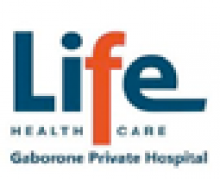Healthy Life Advices

The common consequence of trauma and injury is bleeding and fractures.
External bleeding is obvious and is best stopped by continuous external pressure with a wound dressing and or towel and elevation of the affected limb.
Blunt trauma to the chest or abdomen can cause internal bleeding which for the first aider may be difficult to detect.
Sunburn easily results in superficial burns, especially in children.
Summary
Sunburn easily results in superficial burns, especially in children. Sunburn is managed by cooling the area as quickly as possible. Sunburn can be prevented by avoiding the sun between 10am and 3pm.
Stroke occurs when blood flow to part of the brain is disrupted, usually by a blood clot.
Summary
Stroke occurs when blood flow to part of the brain is disrupted, usually by a blood clot. Stroke symptoms may include dizziness, confusion, weakness on one side, co-ordination problems. A bleeding stroke usually causes a sudden, severe headache. Any stroke-like signs should be considered a medical emergency
Spinal cord injury (SCI) is always an emergency as it could lead to chronic painful conditions, permanent paralysis or even death.
A seizure is an uncontrolled burst of activity in the brain.
Rabies is a fatal viral infection carried in the saliva of warm-blooded animals; the transfer to humans is usually from a rabid dog.
Symptoms in an infected animal include unusual behaviour, aggressiveness, excessive drooling and paralysis.
When stopping to assist at the scene of an accident, park in a safe position that does not add to an already dangerous situation.
Hypothermia occurs when the body's core temperature drops below 37°C.
Summary
Hypothermia occurs when the body's core temperature drops below 37°C. This typically results from prolonged exposure to cold conditions, especially in damp, wet or snowy weather.
A heart attack occurs when one of the arteries supplying blood to the heart muscle is suddenly blocked by a blood clot.
Normal body temperature, when measured by an oral thermometer, is between 36.5°C and 37°C. Fever is when body temperature is over 37°C (37.8°C or more when measured rectally).
Our Partners








